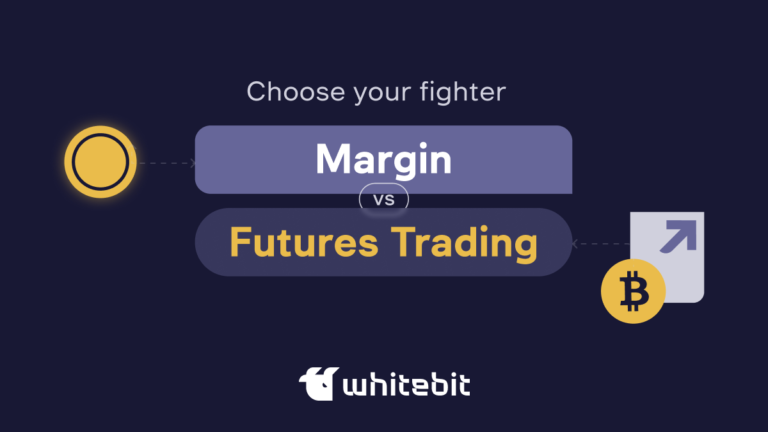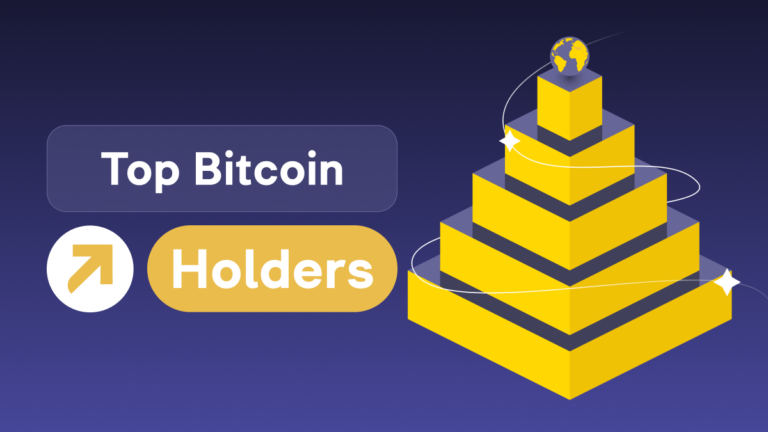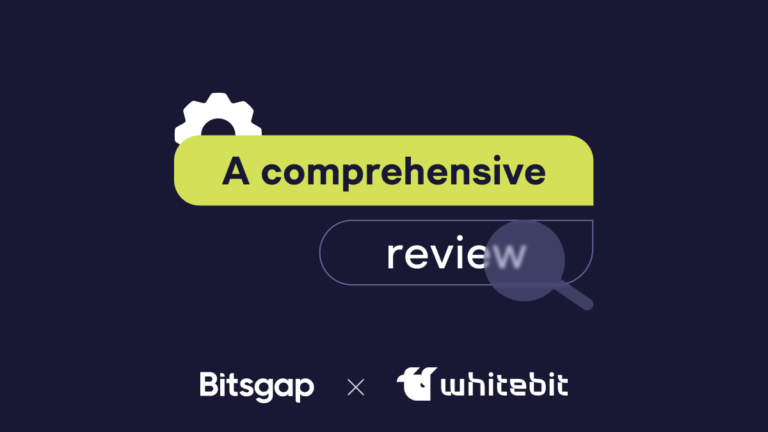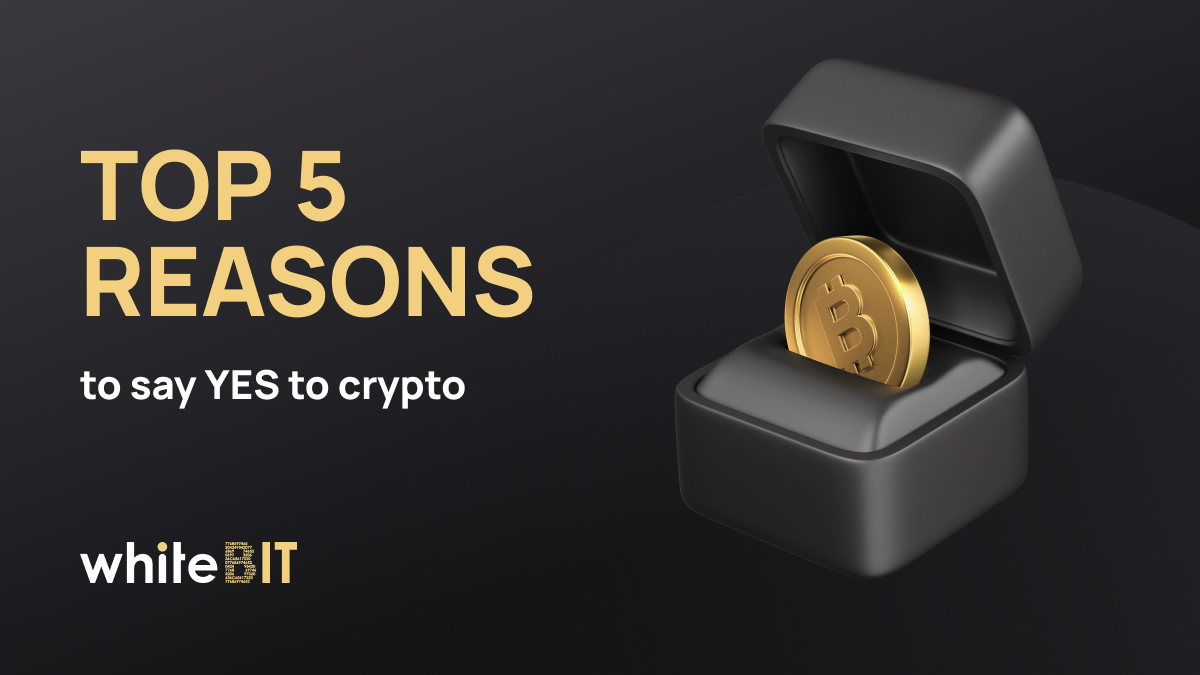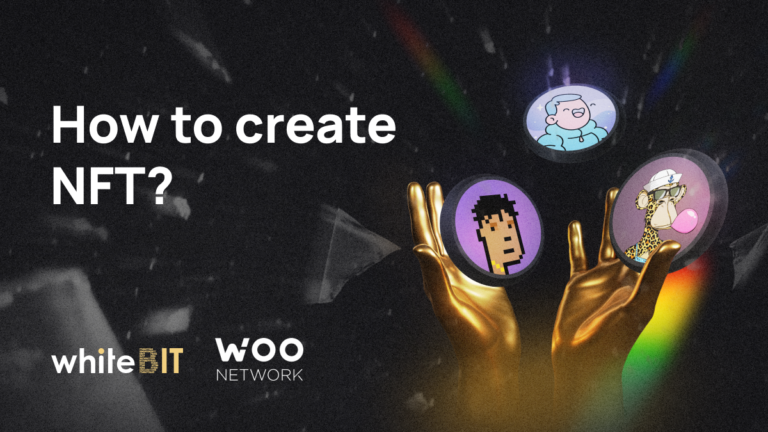Margin Trading on WhiteBIT
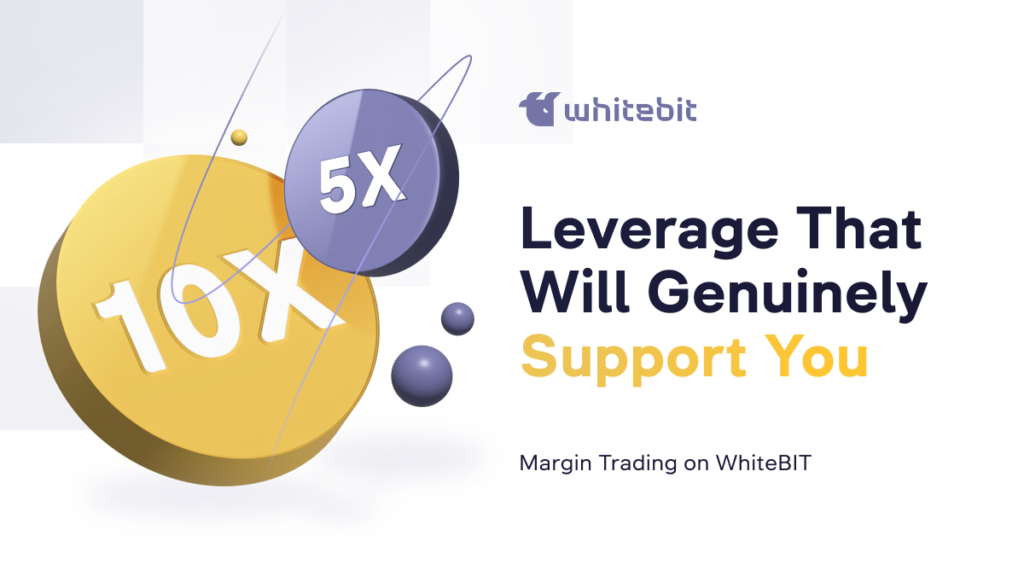
Content
Main:
- Margin trading is a tool that allows trading assets on the market using borrowed funds, enabling traders to profit from price increases and decreases.
- A long position involves purchasing an asset with the expectation of its price appreciation, while a short position involves selling a financial instrument with the expectation of its price decline.
- Leverage is a multiplier that uses borrowed funds to increase the user’s available trading deposit.
In recent years, the digital asset industry has been adopting the experiences of traditional markets and providing users with various tools to implement trading strategies. These tools have gained popularity because they allow trading with borrowed funds, protect positions from unwanted price movements, and benefit from price fluctuations. Overall, they make users more flexible on highly volatile markets.
It creates a unique opportunity to generate higher profits, but also entails significant risks. Let’s delve into the details of why traders love “high leverage,” what margin trading is all about, and why we often hear about “liquidations” in the market. Let’s get started!
What Is Margin Trading?
Margin trading is a tool that allows trading assets on the market using borrowed funds, enabling traders to profit from price increases and decreases. Digital assets such as Bitcoin, Ethereum, and others serve as trading instruments in this industry. An investor pledges their funds, known as Margin, as collateral, guaranteeing the repayment of debt obligations according to established rules.
The use of borrowed funds requires payment of interest or fees at an interest rate. It allows the use of borrowed funds for various trading strategies and potentially earn higher profits from trades.
Technically, margin trading does indeed involve traders buying or selling real assets on the spot market, meaning they actually own the assets they are buying or selling. On the other hand, futures are financial contracts that derive their value from the price of real assets (also known as the underlying asset), but the contracts themselves are traded on a separate market.
What Are “Long” and “Short” Positions?
A key aspect of margin trading is that traders can profit from both price increases and decreases. Opening long positions is one of the most common trading strategies. These positions are opened to gain profits from the price appreciation of an asset. Traders anticipate that the asset’s price will rise, allowing them to sell the instrument at a profit.
In contrast to long positions, short positions involve the trader borrowing the asset and selling it on the open сrypto market at the current price. Subsequently, they wait for a decline in the asset’s price, buy back the borrowed amount at a lower price, repay the borrowed amount with interest, and retain the profit, which is the difference between the selling and buying prices. However, the investor will incur a loss if the asset’s price increases.
What Is Leverage?
Leverage is a loan provided by an cryptocurrency exchange for conducting trading operations. It determines the ratio between one’s own capital and the amount of loan that a user can obtain. With leverage, you can increase your initial account balance by several times.
In the case of margin trading, funds are locked as collateral for an open trading position. It means you are trading with your funds, so spending the borrowed funds in any way is impossible.
On WhiteBIT, traders can open margin positions with leverage of 1x, 2x, 3x, 5x, 10x. Please note that trading with leverage is a high-risk instrument, so thoroughly understanding how it works beforehand is essential.
How Does Margin Trading Work?
For example, you have 1000 USDT. Leverage of 5x means you can increase the available trading funds by five times your capital, which amounts to 5000 USDT (1000 USDT * 5 = 5000 USDT).
Therefore, the total trading amount you can access with 5x leverage is 5000 USDT (~5 BTC) = (1000 USDT (own funds) * 5 = 5000 USDT, with 1000 USDT being your funds and 4000 USDT being the borrowed amount.
Let’s assume that the price of BTC has increased by 10%. In this case, 1 BTC would be worth 1100 USDT. Using the example of your 5 BTC position, if you decide to sell the entire position at this price, you will receive 500 USDT (5000 USDT + 10% = 5500 USDT, of which 1000 is your funds, 4000 USDT is returned to the exchange, and 500 USDT ~ 0.454 BTC is the profit). Your balance would be 1000 USDT + 500 USDT (profit) = 1500 USDT.
On the other hand, if the price of BTC has decreased by 5%, and 1 BTC is now worth 950 USDT, the total value of your 5 BTC position would be 4750 USDT (950 × 5 BTC = 4750 USDT). If you decide to sell the entire position at this price, you will incur a loss of $250 USDT (5000 USDT – 5% = 4750 USDT, with 750 USDT being your funds and 4000 USDT being the borrowed amount, resulting in a loss of 250 USDT).
Please note that this is just an example. Additionally, attention should be paid to the fees for opening and closing positions, etc. More details on this can be found in the “What other Metrics to Consider?” paragraph.
What is a Margin Call? Margin Fraction + Maintenance Margin Fraction
A Margin Call is a warning to the trader that additional funds need to be deposited to support their position. Interestingly, it is called a “Margin Call” because, in the old days, brokers used to call the trader personally to inform them of this unpleasant situation.
Margin trading is a high-risk instrument that can lead to financial losses, so it is important to understand how it works. Unlike futures, margin trading can be compared to spot trading because traders borrow and trade real assets, rather than using contracts.
The Margin Fraction represents the ratio of own funds (available on the “Collateral” balance) to the amount of borrowed funds. And the Maintenance Margin Fraction is the minimum ratio of own funds that must be maintained in the collateral account to avoid liquidation.
The value of Margin Fraction can range from ∞ to Maintenance Margin Fraction . On WhiteBIT, the Maintenance Margin Fraction for each leverage, ranging from 1x to 10x, is 2.5%. In the worst-case scenario, Margin Fraction approaches Maintenance Margin Fraction , leading to liquidation and insolvency. Otherwise, it approaches ∞, indicating full solvency. Therefore, the position will be automatically liquidated if the Margin Fraction value falls below the Maintenance Margin Fraction value.
WhiteBIT also provides a Risk Score Scale that reflects the risk assessment associated with trading and displays the current state of all positions. It visualizes the collateral balance’s solvency, where the value can range from 0% (full insolvency) to 100% (full solvency). The orange sector represents the Margin Call zone, while the red sector represents the Liquidation zone. The higher the leverage and the lower the funds in the collateral balance, the higher the risk.
The user is provided with the opportunity to respond to the current market situation timely:
- Add more funds to the position collateral by replenishing the ‘Margin’ balance.
- Completely close the position.
In margin trading, users can add additional funds to their collateral or margin balance to maintain their positions or choose to close the position entirely. It allows users to actively manage their exposure and respond to changes in the market.
When does position liquidation occur on WhiteBIT?
However, what if the price falls even further against a long position? At that point, the exchange may automatically close the position due to its unprofitability, forcibly liquidating it. It is called liquidation, which occurs after a Margin Call. On WhiteBIT, the Maintenance Margin Fraction for each leverage, ranging from 1x to 10x, is 2.5%.
Example:
The initial equity is 1000 USDT. With leverage of 5x, you can increase the available trading funds to 5 times the initial equity, which is 5000 USDT (1000 USDT * 5 = 5000 USDT).
Since the Margin Fraction represents the ratio of equity to borrowed funds, to express this ratio in percentage, you divide the equity (1000) by the total funds (5,000) and multiply by 100. Thus, (1000/5000) * 100 = 20%. This means that 1000 USDT represents 20% of 5000 USDT.
Maintenance Margin Fraction for 5x leverage is 2.5%, which means that as soon as the ratio falls from 20% to 2.5%, the position will be liquidated.
20% of 5000 USDT = (20/100) * 5000 USDT = 1000 USDT.
2.5% від 5000 USDT = (2.5/100) * 5000 USDT = 0.025 * 5000 USDT = 125 USDT.
Please note that this example is simplified and does not consider market volatility, other trading costs, and other potential factors that can affect the outcome. Additionally, the examples are based on a specific exchange with its commissions, leverage levels, and margin requirements, which may vary on other trading platforms.
What Is Cross Margin Trading?
On WhiteBIT, only cross-margin trading is available to open positions. All your margin positions use one margin balance. In this case, the margin level is unified, and liquidation is applied to all assets simultaneously. Please note that due to high market volatility, it is possible to lose all funds in the account. Nonetheless, cross-margin trading allows profits from one pair to offset losses from another and also enables the opening of new positions.
What Are the Benefits of Margin Trading on WhiteBIT?
- We offer flexible leverage from 1x to 10x.
- We have the lowest fees, which do not exceed 0.1%. Additionally, holders of the platform’s native token, WBT, can further reduce these fees.
- Furthermore, users can utilize other assets as collateral on the “Margin Balance.” It allows for a wide range of assets to secure all positions. However, it’s essential to consider the Margin Weight*.
- Moreover, the fee for using borrowed funds is only charged if an order is partially or fully executed, which helps to reduce unnecessary expenses.
Margin Weight is the portion or percentage of the total position value that needs to be held as collateral (or margin). Different asset weights are assigned in margin trading based on risk or volatility. You can refer to the current information regarding available assets in the Collateral Weight section.
What Other Indicators Should Be Considered?
Each time you open or close a position, either partially or completely, you are using an order. Long positions are opened with Buy Orders and closed with Sell Orders. Conversely, short positions are opened with Sell Orders and closed with Buy Orders. Presently, the order is executed, you will be charged the same commission as on the spot market, depending on whether you are a Taker or Maker, for the entire order volume, taking leverage into account.
The commission rate of 0.0585% for using borrowed funds applies to any level of leverage. This is a fixed financing rate that is charged per second based on the open position size.
- Commission for the operation related to opening a position – 0.1%;
- Commission for the operation related to closing a position – 0.1%;
- Commission for the operation if the user adds funds to an open position – 0.1%;
What Are the Advantages of Margin Trading on WhiteBIT?
- Flexible leverage from 1x to 10x.
- One of the key advantages of margin trading on WhiteBIT is the low fees. The commission rate for using borrowed funds with any level of leverage is 0.0585%. Additionally, platform users who hold the native coin, WBT, can receive a discount of up to 100% on Maker fees.
- Furthermore, users can utilize other assets in their “Collateral” balance. This allows for a wide range of assets to secure all positions, although the margin weight should also be considered. The fee for using borrowed funds is only charged if the order is at least partially executed, helping to reduce unnecessary expenses.
- Moreover, unlike spot trading, when opening a leveraged position, it is possible to create an OCO (One Cancels the Other) order.
| Total Collateral | This is the amount of funds on the “Collateral” balance. |
| Free Collateral | Funds on the “Collateral” balance that are not involved in any position. |
| Balance for Trading | This is the amount of money available on the “Collateral” balance for opening and maintaining positions, multiplied by the selected leverage (x1, x2, x3, x5, x10). |
| Leverage | Leverage is a financial mechanism that allows traders to increase their purchasing power by borrowing funds for trading.
For example, if a trader uses a leverage of 10:1, they can trade with an amount 10 times greater than what is available in their trading balance.
Leverage increases both potential profits and potential losses. The leverage ratios available on WhiteBIT are x1, x2, x3, x5, x10. |
| Margin | These are the funds used to secure a position. |
| Risk Score | It is a risk assessment tool associated with trading. It reflects the current state across all positions.
It visualizes the solvency of the user’s collateral balance, where the value can range from 0% (full borrower’s solvency) to 100% (full insolvency).
The orange sector represents the Margin Call zone, while the red sector represents the Liquidation zone. The higher the leverage and the lower the funds on the collateral balance, the higher the risk. |
| Margin Fraction |
The Margin Fraction value represents the ratio of a user’s available funds in the “Collateral” balance to the total borrowed funds. The value can range from +infinity to Maintenance Margin Fraction. On WhiteBIT, the Maintenance Margin Fraction for each leverage, ranging from 1x to 10x, is 2.5%. In the worst-case scenario, the Margin Fraction tends towards Maintenance Margin Fraction (liquidation, insolvency), otherwise towards +infinity (full solvency). |
| Maintenance Margin Fraction | The Margin Fraction represents the minimum required ratio of own funds that must be maintained in the collateral account to avoid liquidation. The position will be automatically liquidated if the Margin Fraction value falls below the Maintenance Margin Fraction threshold. |
| Min. Order Amount | The minimum amount of funds (Stock) that will be used to place an order. |
| Min. Order | The minimum amount of funds (Money) that will be used to place an order. |
| Taker Fee/ Maker Fee | Taker Fee: The taker fee is the commission a user pays when their order is executed immediately. For example, the user will incur a taker fee if a market order is placed and executed at the current market price. This fee is typically slightly higher because takers bring new liquidity to the market.
Maker Fee: The maker fee is the commission a user pays when their order is not immediately executed and placed on the order book. The order needs to enter the exchange’s order book. This fee is usually slightly lower because such orders help maintain market stability and provide liquidity. |
| Min. Size Increment | The Min. Size Increment indicates the smallest allowable unit of quantity or position size that can be entered when placing an order on an exchange.
This parameter restricts the precision and granularity of values specified for the volume or position size.
For example, if the Min. Size Increment is 0.001 BTC, which means that the quantity of BTC in an order can only be specified with a precision of three decimal places. Therefore, you can enter values such as 0.001 BTC, 0.002 BTC, 0.003 BTC, etc.
The exchange will not accept any value smaller than the minimum order step. For instance, on WhiteBIT, the Min. Size Increment for BTC/USDT is 0.000001. Different trading pairs may have different values for the Min. Size Increment. |
| Ping | It is the server response time. |

